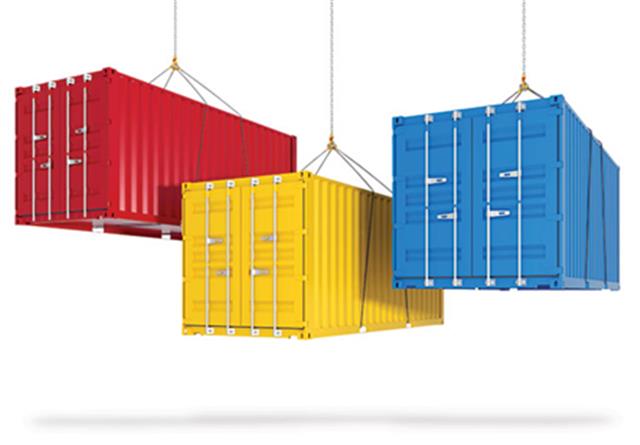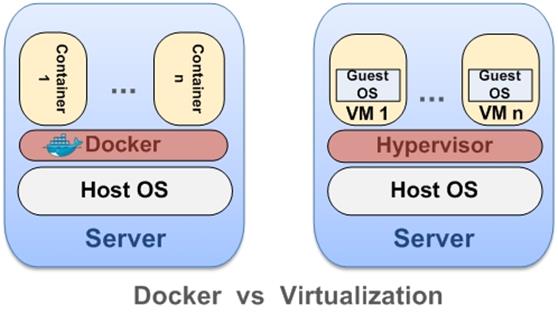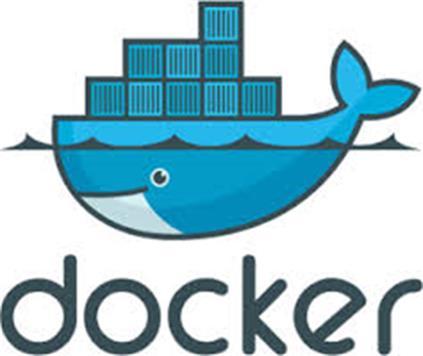Top 5 Benefits of Containerization: What Are They and How It Works
By Alex Carter on September 16, 2024
Containerization has recently become a buzzword. It seems like everyone talks about it. But what is it, and why is there such a rave about it? Truth be told, the benefits containerization offers are hard to ignore. Without overhyping it, it’s become a game-changer in the tech world, making it possible to deploy products and scale faster and more efficiently.
Have you been thinking about switching to containerization, but aren’t sure if this is the move you need? If so, this article is for you. Further down, we will go through the main benefits of containerization, as well as how it stacks up against virtualization, so you can make an informed decision. Let’s get right into it!

Containerization: What Is It
Before we jump to the benefits, let’s start by explaining what containerization is and how it differs from virtualization so you can better understand its value.
So, what is containerization? At its core, containerization is a method of packaging software and all its dependencies into a single, portable unit called a “container”. The container includes everything the software needs to run—code, runtime, system tools, libraries — so it can work reliably in different environments.
This differs from traditional virtual machines (VMs), which also virtualize the underlying hardware but are bulkier since they carry entire operating systems. Here are just some of the challenges virtualization entails:
- Inconsistencies – apps and packages often face issues when deployed across different virtual environments;
- OS dependency – applications only run on specific operating systems, limiting flexibility;
- Limited isolation – there is no instant sandboxing at the OS level to isolate applications effectively;
- Inefficient resource use – it is difficult to deploy multiple app replicas efficiently, and load balancing is limited to within a single machine rather than across the OS;
- Complicated image patching – managing production-level deployments like canary or blue-green across clusters and multiple regions is inflexible and challenging.
That’s where containers come in. They are lightweight and quick, and they don’t use any virtual hardware or operating system resources, making them ideal for modern development practices. Popular platforms like Docker and Kubernetes have made containerization mainstream, offering tools to simplify the process of managing and scaling containers.
Now that we’ve briefly touched upon what containerization is, let’s dig deeper and take a close look at the top benefits that make it a powerful tool for developers and businesses alike.
Advantages and Benefits of Containerization

Perhaps the most important advantage of containerization is its flexibility. There are so many ways to use it in a digital workspace, and the number of potential applications only keeps growing. So, here are the main benefits of containerization:
- Portability and agility;
- Speed and scalability;
- Security and Fault Isolation;
- Flexibility and Efficiency;
- Ease of management and fast delivery.
Now, let’s look at each of them in more detail.
Portability and Agility
One of the most significant benefits of containers is portability. They are designed so they can be run across a variety of environments, be it a virtual machine or a test server, without any compatibility issues. They have everything the application needs, eliminating the need for any specific OS. This helps boost productivity while also significantly speeding up deployment.
Coupled with portability, containers offer remarkable agility. Since they make it possible to package an app along with its configurations and dependencies into one unit, developers can work more efficiently without worrying about inconsistencies or errors due to environment discrepancies.
Speed and Scalability
Speed is another benefit that ticks the scale in favor of containerization. Containers are lightweight and don’t carry a full OS, which means they can start up almost instantly. As a result, it’s much safer and quicker to make updates or scale without the worry of downtime. This is especially beneficial for companies whose applications need to scale on demand.
This speed directly supports scalability. With containers, companies can easily scale any of the app components and have peace of mind that won’t mess up the functionality of the app. Platforms like Kubernetes take it a step further by automating the process of scaling, ensuring you have the right number of containers running at any given time.
Security and Fault Isolation
Another important benefit of containerization is enhanced security. Since containers are isolated from one another, this means if one of them falls under attack, this won’t hinder the functionality of other containers. You can simply restart the problematic one without impacting the rest.
This fault isolation is what makes applications more reliable, especially where each service runs in its own container. Virtual machines can’t offer the same level of security, making them more exposed to vulnerabilities.
Efficiency and Flexibility
Containers make efficient use of system resources. Unlike virtual machines, which require separate operating systems, containers share the host OS kernel, drastically reducing overhead. This means that more containers can run on the same physical hardware compared to running VMs, making better use of available resources and cutting costs.
Moreover, you can use containers pretty much in any environment, from on-premises data centers to public and private clouds. No wonder so many companies have chosen to take a hybrid approach where some of the containers are deployed in the cloud while the rest are kept in local environments.
Ease of Management and Fast Delivery
The beauty of containers is that they are designed with the tools, making the use of these platforms a lot easier. With platforms like Docker and Kubernetes, developers can automate development, scale, and orchestrate containers, while freeing up time for other high-priority tasks instead of managing infrastructure.
The ability to quickly identify and fix issues in one container without affecting the rest of the system helps significantly speed up the software development lifecycle. Developers can push changes to production more frequently, deploy new features faster, and roll out updates as often as necessary, reducing time-to-market.

Disadvantages of Containerization
Despite the numerous benefits that containers offer, they aren’t flawless. Just like VMs, they come with their own cons. Here are some of the main complexities companies need to consider before adopting the technology.
- Limited resources – first and foremost, there aren’t enough skilled experts experienced in working with containers. You may have to spend a good amount of time finding one;
- Security risks – despite isolation, containers don’t provide the same level of security as VMs. They share the host system’s kernel, which could expose the entire system to vulnerabilities if the container or host OS gets under attack;
- Complexity in orchestration – unlike VMs where a single orchestrator can be used, containers require the use of several tools like Kubernetes, Swarm, etc., making the whole process more complicated;
- Data storage issues – storing data on containers is one of the main reasons some of the data gets lost. To prevent data loss, it’s crucial to move the data from the container out to a safe place like the host system or cloud storage;
- Difficulties with monitoring and debugging – because containers are isolated and usually short-lived, they are much more complicated to monitor and debug than traditional applications. In most cases, you’ll need tools like Prometheus or ELK to keep track of the performance;
- Overhead in small-scale deployments – containerization might not be the best solution for small-scale projects or simple applications. The effort, time, and money it takes to set up container orchestration platforms will simply not justify the benefits.
When Use Containerization
In light of everything said above, you might wonder when containerization should be used and if this is the technology you should consider adopting. Let’s look at the scenarios where the benefits of containerization truly shine.
- Microservices architecture – if you work with microservices, containers are the way to go. By breaking down an app into smaller, independent services, they allow for easier updates and scalability;
- DevOps and CI/CD pipelines – containers are a perfect fit for DevOps and CI/CD pipelines. They help speed up deployments, allowing developers to develop higher-quality products within a shorter time;
- Cloud-native applications – portable and flexible containers are ideal for cloud-native applications, allowing for easy deployments across various cloud environments – whether public, private, or hybrid;
- Large-scale applications – containers can be a game-changer when it comes to deploying large-scale apps, allowing for easy scaling and more efficient use of resources. They can handle load spikes, ensuring the app’s smooth functioning even during peak times;
- Multi-environment deployments – in cases where applications need to be deployed across multiple environments, such as development, staging, and production, containers make the process much simpler;
- Test automation – containers are useful for automating testing. Rather than setting up separate VMs, developers can take advantage of containers to run automated tests.
To sum up, almost any organization can make use of containerization when applied properly. Even small enterprises that adopt this technology can make better use of their resources, enabling them to stay competitive in the digital space and match larger firms.
Conclusion
In the end, containerization isn’t just a flash in the pan, as it happens with many other development trends. This technology offers many advantages, making it a core pillar for companies looking to enhance their efficiency and keep up with the pace of digitalization.
As of now, it’s being widely adopted around the world. Only this year, this number has reached slightly over 65,000, but we can expect these figures to grow in the coming years. Moreover, the costs associated with adoption have started to decrease, making it more affordable for enterprises of all levels.
Decomposing applications into smaller components allows businesses to easily improve any of their features without the risk of downtime and roll out new updates faster and more efficiently. As more companies recognize the benefits of containerization, containers will continue to play a vital role in the future and become the core principle for rapid growth.
Posted in blog, E-commerce
Alex Carter
Alex Carter is a cybersecurity enthusiast and tech writer with a passion for online privacy, website performance, and digital security. With years of experience in web monitoring and threat prevention, Alex simplifies complex topics to help businesses and developers safeguard their online presence. When not exploring the latest in cybersecurity, Alex enjoys testing new tech tools and sharing insights on best practices for a secure web.
